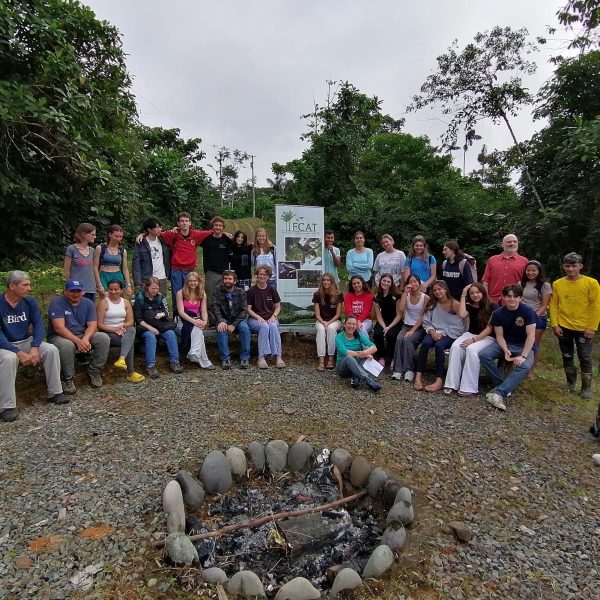
The harmony of chirping birds and humming insects, the shuffle of swaying leaves and the earthy scent of the rainforest greet you as you step out of your lodging. You are ready for another day of fieldwork researching habitat selection of manakin birds, reptile and amphibian diversity or phenology of palm trees. This is a reality for Tulane University students and researchers at the Fundación Para La Conservación de los Andes Tropicales Station, known as FCAT.
The FCAT station is a “living laboratory” where students, researchers, locals and volunteers collaborate to conserve disappearing forests and the vast diversity of organisms living there through a number of research projects. The location of FCAT was chosen because of its lavish biodiversity, but also because of the substantial threat climate change and habitat loss pose to the area. According to the FCAT website, the restoration of the area “has a disproportionately large impact on biodiversity.”
The FCAT research station administers two two-week courses for Tulane students called TIERA, or Tulane Interdisciplinary Environmental Research and Action Program. Students, alongside local Ecuadorians, engage in grassroots research and conservation in the Chocó Rainforest in Ecuador through the program.
Jordan Karubian, an associate professor of ecology and evolutionary biology, is a member of the original founding team of FCAT. After finishing his Ph.D., Karubian moved to Ecuador and traveled around the country before settling in Northwest Ecuador. There, he built deep relationships with local Ecuadorians and began collaborating with them in a “non-hierarchical and mutually respectful way,” Karubian said. Karubian has been doing research in Ecuador since 2003, many years before he joined the Tulane EEB department in 2010. Before the official founding of the 1,500-acre reserve in 2019, Karubian and his team worked in various communities around Ecuador. The FCAT team, also known as “FCATeros,” is still heavily involved with the local communities.
As students increasingly grow up in a time of pressing environmental issues and feel environmental anxiety, the opportunity to work on “projects that directly contribute to FCAT conservation programs, which are having real-world positive impact, gives a lot of students a sense of hope and…agency,” Karubian said.
Zoey Ocampo, a sophomore who participated in the two-week TIERA course at FCAT in May, echoed the sentiment. “It gave me a little bit of hope, because there’s people out here that really care across the world,” Ocampo said. “It just reaffirmed for me [that] I’m very interested in the intersection of social justice and environmental justice.”
Ocampo spoke about the disproportionate effect of climate change on communities in the Global South and how the trip opened her eyes to the importance of how interconnected environmental and social issues can be in areas like Ecuador.
“[These communities] have a lot of knowledge to share,” Ocampo said. “They should absolutely have seats at the table. They should be leading the discussions.”
On her trip, Ocampo was in a cohort researching the cacao microbiome. Other groups did projects on bird populations, river water quality and its effects on locals and ethnobotany, specifically on how locals use native plants for various purposes. Ocampo spent a week in the field gathering samples and one week working in the lab, where most of the research was self-led. One of the most memorable experiences for Ocampo was working with local Ecuadorians, whom she deemed “super experts.”
Community-engaged research is what Karubian calls the “nucleus of FCAT.” The goal of FCAT remains consistent over its decades-long history: to conserve biodiversity through research, but “with the full realization that you can’t do that without prioritizing and ensuring the well-being of the people that live in the area,” Karubian said.



Leave a Comment